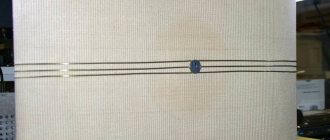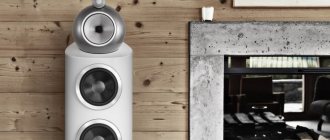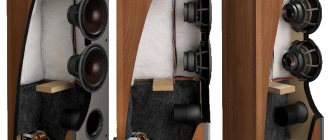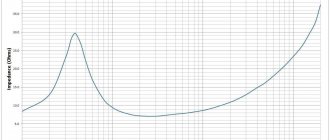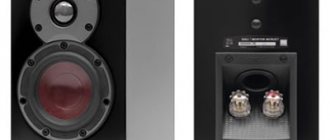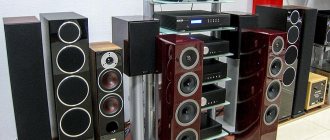Canton Elektronik (Canton Electronic) is a German manufacturer of passive and active speaker systems in the High End and Hi-Fi categories.
Canton Elektronik GmbH + Co. KG was founded in 1972 in Weilrod (Hesse, Upper Taunus) by four like-minded people: Hubert Milbers as general manager, Otfried Sandig as sales manager, Wolfgang Seikritt as product development. , Günther Seitz - production management.
Founders of Canton
Canton's founders came from Heco and Braun. The reason for creating their own separate company (Canton) was the disagreement of former experienced employees with the new strategy and philosophy of their enterprises.
Production in Weilrode
The production of Canton acoustics began with a small workshop in one of the Weilrod schools. The company employed 35 employees (about 10 of them previously worked for Heco). From the first days, the company set itself the goal of overtaking all competitors in its class. Canton decided to approach this problem by creating the compact acoustics LE 250.
This two-way 25W model was designed specifically for small living rooms - Canton tried to produce a universal product. The system was considered successful, so several more compact speakers appeared in the LE series.
LE 250, LE 400 and LE 600
Realizing that the business had prospects, the founders of Canton rented additional premises in Weilrode, including an abandoned hangar, which they decided to use as a warehouse. Next to the school where they set up a workshop, Canton began construction of its first full-fledged factory.
Gamma 800R
Over the years of its existence, the company, in addition to acoustics, managed to work on other equipment. In 1975, Canton released the Discostat dry record cleaning and static removal system.
Combi
In 1977, the company introduced its first stereo receiver, the Gamma 800 R, which was distinguished by its wide functionality and unusual cubic design. In 1978, Combi switchers appeared in the Canton catalog for connecting several pairs of speakers to one amplifier.
Ergo Active
The late 70s and early 80s were a fruitful time for the company. In 1979, Canton introduced the first system on the market with a subwoofer and compact 2.1 satellites. A year later, the company launched the production of Ergo series floorstanders.
Pullman
The first were Ergo Active speakers with two built-in amplifiers (for mid/high frequencies and for low frequencies). Later, passive Ergos also appeared. Also in the 80s, Canton produced car audio systems and speakers. Among Canton's main achievements in the field of car audio of that era, it is worth highlighting the Pullman speakers.
EC-P1
In 1985, the company introduced the EC-P1 preamplifier, created specifically for CA series speakers (active acoustics with proprietary titanium tweeters).
Speaker systems Canton Reference 3K
The term in the title was coined by the Strugatsky brothers for a series of stories about the “World of Noon”. It means the technology of instantly moving a person to any given place through a network of booths similar to telephone booths. What does this have to do with testing the new Canton acoustics? The most direct.
When dustproof nets are installed on these monumental speakers, even a German acoustics specialist can mistake them for models of the previous “anniversary” Reference line. The same proven three-strip design and flawless twelve-layer piano lacquer finish. Almost exactly the same dimensions and main technical characteristics. It is not immediately possible to notice that the shape of the convex side walls in the upper narrowed part of the body has slightly changed, that the base has also been made differently, which has lost metal spacer supports and acquired an internal bass reflex port.
A 20% layer of ceramics with the addition of tungsten is applied to the aluminum base, which radically changes the strength and resonance properties of the diffusers.
These columns can only be moved from their place with a fair amount of effort. Each of them weighs more than fifty kilograms! This also reveals a similarity with its predecessor models - the cases are also assembled from multilayer laminate, the thickness of which reaches 50 mm.
But after removing the grills, you immediately understand why the letter “K” appeared in the names of the new models. The familiar hybrid aluminum-ceramic dome tweeter now works in conjunction with completely different drivers. Both the 18cm midrange driver at the top and the pair of 22cm woofers at the bottom have unusual diffusers with a matte gray finish. The process of their production is unique: a 20% layer of ceramics with the addition of tungsten is applied to an aluminum base, which radically changes the strength and resonance properties of the diffusers. This, by the way, is indicated by the rather strange, almost flat profile of the heads. The slightly convex ring part of the emitters immediately transforms into a concave, but very large central insert, which is necessary here to give the moving element additional rigidity.
Judging by the description, there are many other innovations in the Reference K series. The elastic suspensions of the diffusers have become double - at large amplitudes they provide better linearity of vibrations. Driver baskets are extruded from a material that is now actively used by airliner manufacturers - a polymer reinforced with carbon fibers.
Crossovers have been designed with separate HF, MF and LF circuits, with return correction within +/-1.5 dB provided in the two upper bands. Proprietary DC (Displacement Control) technology allows you to control the deepest bass at any volume and prevent spontaneous fluctuations in the infra-low region. The filters are assembled from selected components and mounted on a single non-resonant reinforced board. The “package” of improvements even included internal wiring, performed with special cables of six twisted conductors.
Proprietary DC (Displacement Control) technology allows you to control the deepest bass at any volume and prevent spontaneous fluctuations in the infra-low region.
“Few people are taking fundamental steps in acoustics now,” admits Frank Goebl, the main developer of the “ceramic” Reference series, “so everyone is looking for reserves of improvement in new materials, in the field of calculations, in some engineering tricks that are not always noticeable to the consumer.” .
But the main result is clearly visible - the sound. I haven’t experienced such strong emotions for a long time after pressing the Play button - it was as if teleportation had turned on to a completely different place. The space in all its details was built so precisely, clearly and realistically that my eyes involuntarily began to search for apparent sources of sound. And in general, are they apparent? The “monuments” of the buildings, for example, disappeared without a trace, leaving you alone with real reality. The accuracy in conveying the atmosphere is so high, and the separation of plans in depth is so clear that the scene can be spoken of as a large-scale natural or man-made landscape.
If we evaluate the sound in tonal terms, then all that remains is to state a fact - the Reference 3Ks do not bring anything of their own. Until the acoustics have played out sufficiently, the harmony of timbres will remain a little artificial and be composed of fragments, like a mosaic. But one can already feel the apothecary’s balance and purity in his character. An interesting nuance: the speakers do not receive a signal from the most advanced source and amplifier and, in theory, should detect hardware tint, but for some reason you don’t really notice it. At the same time, 3K is very sensitive to the class of cables. As soon as you replaced the interconnect or speaker cable in the system, new shades immediately appeared in the speaker’s voice.
I was especially pleased with the freedom of sound. Dynamics, like space, are not at all constrained. The speed of the drums, the detail of the after-sounds, the color of all the highs - all this is well revealed with transistor amplification. It is preferable in cases where you strive to obtain in an audio system one hundred percent infallible visualization of not only the main musical images, but also the rest of the acoustic background.
It’s been a long time since I felt such strong emotions after pressing the Play button – it was as if teleportation had turned on to a completely different place.
Tests with tube amplifiers also gave a lot of reasons for thought. The dynamic pattern softened, complex harmonic tones blossomed, the images became a little more impressive... And although the sound space partially lost its harmonious order, and in some places even hid certain nuances, the musical interpretation still turned out to be lively and interesting. What was captivating, first of all, was the overall energy – not that which is expressed in brute force, but the internal one, creating an almost physical authenticity of reproduction. What Reference 3K does is shift attention from the perception of the general 3D sound picture to something specific: playing technique, performing style, vocal nuances or the sound features of a particular instrument...
Canton Reference 3K
Manufacturer: Canton Elektronik GmbH & Co KG (Germany)
www.canton.de
Configuration: 4 emitters, 3 bands || Acoustic design: bass reflex || Frequency range: 18 - 40000 Hz || Sensitivity: 89 dB (1 W/1 m) || Resistance: 4 – 8 Ohms || Crossover frequencies: 200, 3000 Hz || Input power nom/max: 350/600 W || Finish: black or white piano lacquer || Dimensions with supports: 335 x 1150 x 490 mm || Weight: 56 kg || Price 890,000 rub. for a couple
COMPONENTS
Sources
- player Denon DCD-2020AE
- laptop Apple MacBook Air A1465
Amplifiers
- integral Denon PMA-2020AE
- all-in-one Melody PM845
Cables
- interconnects InAkustik Referenz NF-1203 and NF-803, InAkustik Premium (Jack-RCA)
- digital Blue Dual Shield USB 2.0 AB
- acoustic InAkustik Referenz LS-1604
- power InAkustik AC-1502
I was especially pleased with the freedom of sound. Dynamics, like space, are not at all constrained.
MUSIC
- The Manhattan Transfer, "Vocalese". Atlantic Recording Corporation, 1985
- Pink Floyd, "Dark Side of the Moon". EMI, 2003
- Creedence Clearwater Revival, "Chronicle". Fantasy Records, 1976
- King Crimson, "Larks Tongues in Aspic". Virgin EG Records, 1970
- Tracy Chapman, Electra/Asylum Records, 1988
- Nikolai Rimsky-Korsakov, “Scheherazada”, “Capriccio Eapagnol Mackerras”. London Symphony Orchestra. Telarc, 1990
share
Tags: AppleBlue DualCantonDenonInAkustikMelody
The beginning of the Digital era and cinema systems
Until the mid-1990s, Canton continued to gradually develop its own products, including active loudspeaker systems and metal cone speakers.
Digital
In 1995, the company presented one of its most important developments - the Digital system, which consisted of two passive speakers, a digital controller and special software. The kit made it possible to optimize the sound of the acoustics according to the room and use processing for different genres of music.
In parallel with the development of DSP systems for listening to music, Canton has been intensively developing kits for recreational centers. In 1998, Canton's first THX-certified surround sound system was added to the lineup. From the late 90s to this day, the company continues to deal with home theaters. In addition to traditional multi-channel sets, the Canton line now includes soundbars and speakers with virtual surround sound.
New millennium
In the first decade of the 21st century, Canton began to shape the product line that became the basis for the current catalog: in 2002, the Karat Reference 2 DC high-end speakers were introduced (the technologies used in this speaker are still used in modified form today); in 2003, embedded systems appeared in the company's catalogue.
Karat Reference 2 DC
In 2005, premium speakers Vento Reference 1 DC were introduced with a patented sound wave propagation system; In 2009, Canton began using new lightweight ceramic-based tweeters, as well as midrange drivers with curved aluminum diaphragms that reduce vibration.
Vento series
In 2010, the company’s portfolio included the WA 100 amplifier, the main feature of which was wireless signal reception, and a year later, based on this model, the Your World series of multiroom devices was released.
WA 100
In 2015, continuing to develop driver technology, Canton began using ceramic and tungsten membranes in speakers. Such diffusers have become the basis of the company's premium speakers. This type of emitters is used in all speakers of the current flagship Reference series.
Reference 1K
Today, the Canton catalog includes several series of High End/Hi-Fi acoustics, speakers for home theaters, wireless systems, sound bars, built-in speakers, as well as subwoofers and speaker stands.
Canton brand history
The main motto of the Canton company is
, throughout its existence, had the slogan "
pure music
".
Therefore, all manufactured products have always corresponded to this slogan. That is why a huge number of music lovers and connoisseurs of real sound have given their preference to Canton acoustic systems
.
Canton Company
hi-fi
enthusiasts who came together with one goal:
to develop and manufacture the world's best loudspeaker systems
. These people were Hubert Milbers (Managing Director), Otfried Sandig (Head of Marketing and Sales), Gönter Seitz (Development Engineer and Technologist) and Wolfgang Seykritt (Head of Research and Innovation).
Founders:
Hubert Milbers – Managing Director
Otfried Sandig – Head of Marketing and Sales
Günter Seitz – development engineer and technologist, currently managing director
Wolfgang Seikritt – Head of Research
The success of the new company was determined by the fact that each of the founders had their own experience and knowledge.
A team of specialists has been the key to success from the very beginning. With four different backgrounds, great entrepreneurial potential and good connections, the founders were successful from the start.
Very quickly, the four founders found the first premises for initial production and on October 17, 1972, the company was registered. Since the brand name had to be in harmony with clear sound and the highest quality,
the chosen name
Canton
became absolutely correct and logical.
Canton
is a combination of two words, the Latin "
cantare
" - to sing, and the German "
ton
" - musical tone. On January 1, 1973, the company officially began production activities with 35 employees. In their first room, they assembled cabinets and speaker systems, and all development took place in the living room of one of the company’s founders. In 1975, it was decided to make significant changes to the shape of the logo, so that the thickness of the font would change from thinner to thicker, in the form of a musical Crescendo - enhancing the sound.
Canton head office
, the research and development center, as well as part of the production facilities, are located
in Germany
, in the small town of Wailord, which is located near Frankfurt am Main. This is a town located almost in the center of Germany, which is the administrative district of Hesse. And despite the fact that Hesse itself is a major industrial and economic center, most of its territory is endless green forests with picturesque hills, calm rivers and blue lakes. Wailord is a small secluded village, but it is here that the history of the Canton company began more than 45 years ago.
The company's founders created all their first technical developments and projects for developing businesses in their homes.
, constantly gathering at someone's house, in the near future they were able to rent the building of an old empty school, which is still the company's production and office building.
A low school building located near the road, with a large Canton
, can often be seen in advertising brochures and on the official website.
Like many hi-fi
equipment,
Canton
has its own philosophy.
So, according to the developers, acoustic systems belong to the living room or other room where they are located, and accordingly, they should ideally suit the surrounding space, as well as the people in it. Canton acoustic systems
should not only surprise serious music connoisseurs, who are mostly men, with their unsurpassed sound, but also amaze the aesthetic feelings of women, who should admire the appearance of the acoustic systems alone.
When the hearts of women are won by beauty and aesthetics, and the ears of men by sound and power, then the thought of whether or not to purchase Canton acoustics for your home will never arise.
Of course! In 1979, Canton
introduced
the first subwoofer system
, which set its own standards in this area of acoustic system production for many years.
In 1980, the company introduced a series of floor-standing speaker systems
“
Ergo
”, where a hybrid amplifier was used in each speaker, and the “smart control” circuit guaranteed the most accurate sound.
In 1983, a decision was made to expand the range of manufactured acoustics, and thus the first automobile acoustic system
"
Pullman
".
The Pullman Set 300
became the best car speaker in its class, and even the King of Spain, Juan Carlos, enjoyed the sound of these speakers while sitting in his convertible.
In 1989, at its research center in Germany, the company built its own anechoic chamber,
with the goal of improving the quality of research in the field of sound and the production of the most accurate, musical and high-quality speaker systems.
The chamber was equipped with Klippel laser measuring equipment, which made it possible to perfect all measurements associated with the production and development of both the diffusers themselves and the loudspeaker systems in general. The camera became a laboratory that accompanied each new development of the company, in the most optimal conditions. Thanks to the anechoic chamber, the company developed its own program, which became fundamental for all generations of speakers based on DC and SC technologies. All this has allowed a huge number of music lovers around the world to admire the sound of Canton speaker systems
, their accurate reproduction of low frequencies with incredible flexibility and confidence.
In 1995 Canton
revolutionized the world of music playback with the introduction of
digital speakers
.
The new product received numerous awards, including the European Audio Award
, and was recognized as the best innovation in the field of audio.
In 1998, Canton engineers
introduced their
first surround sound system
that was designed and fully compliant with the
THX
.
Thanks to THX
certification, the acoustics were excellent for reproducing movie soundtracks, and were received with a bang by fans of both the movie and the company itself.
In 1999 Canton
showed the general eye and ear the different colors of the new acoustic systems in the “
Popsmarts
” line. These colored and transparent speakers have found love among young people.
In 2000/2001, the market was conquered by sets of slender acoustic systems " Karat
» for home theater systems.
In 2002 Canton
released its flagship line
Reference 2 DC
. “This is a masterpiece in the field of design and sound among speaker systems, in which all innovative technologies were involved,” said Canton’s CEO.
In 2003 Canton
introduced
a speaker system for home movie lovers
with sophisticated taste.
It is intended for those who expect a lot not only from the sound of acoustics, but also from its appearance. of the CD 100
floor-standing loudspeakers were only 9 cm wide.
In 2005 Canton
became the first manufacturer to develop and begin producing
a series of high-end wireless Hi-Fi speaker systems
.
The result is great sound that can be heard throughout the entire home.
Today at Canton
three own factories, which are located in Germany, in Weilord, in the Czech Republic, immediately on the border with Germany and in China, where only a limited range of products is assembled.
Housings for speaker systems are produced in Poland, at a factory that produces premium furniture. Canton today
is a company with an annual turnover of more than 50 million Euros and a staff of 160 people. The company is number one in Germany, number two in Europe, in the sales of loudspeaker systems, and has more than 1,400 dealers worldwide. The company is managed by one of the founders, Günther Seitz and his son Achim Seitz.
Despite the scale of production and leading position in the European market Canton
is still practically a family enterprise, the main assets and the center of strategic management of which are located in Germany, with a team of people who have been following the traditions of the company for several decades.


